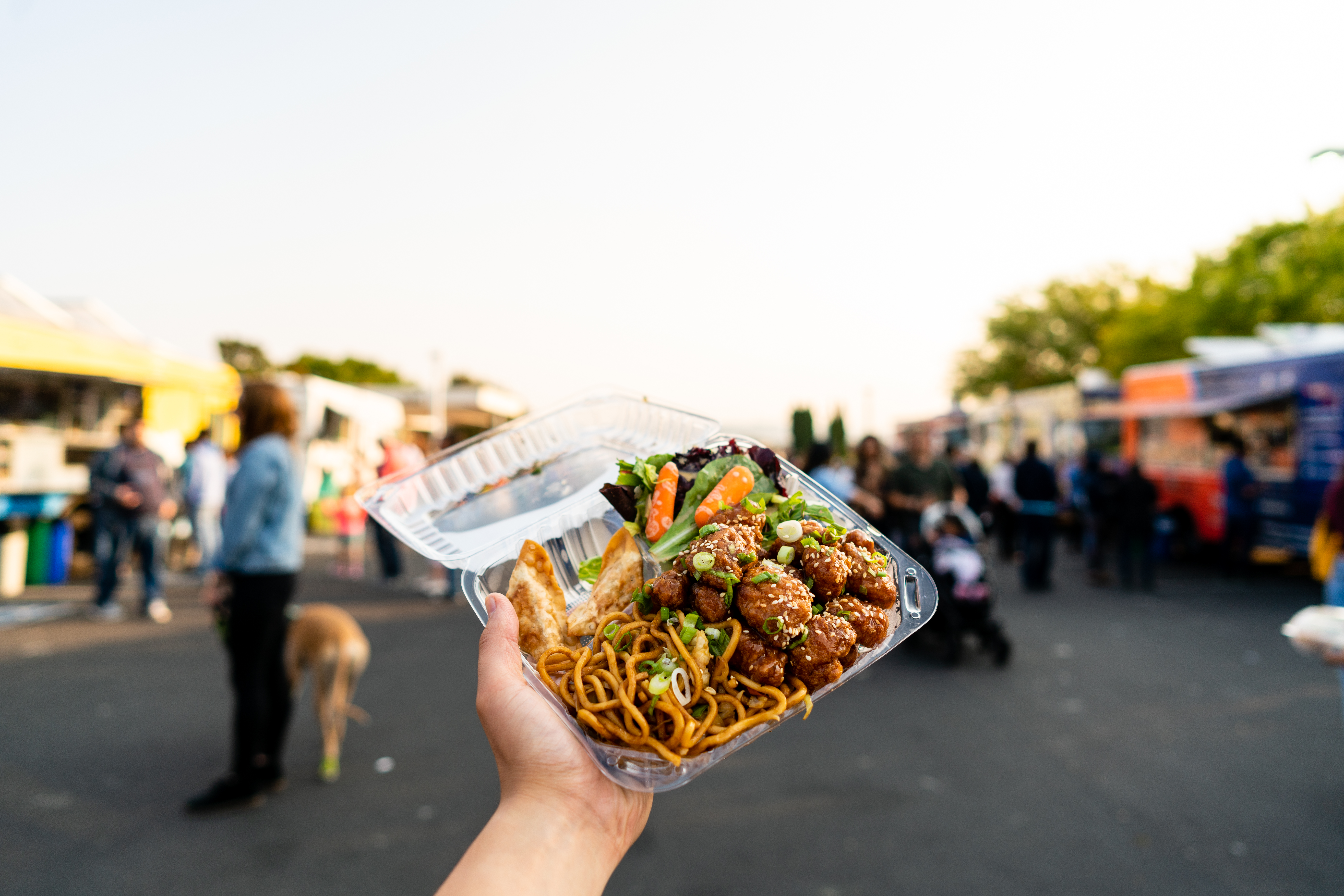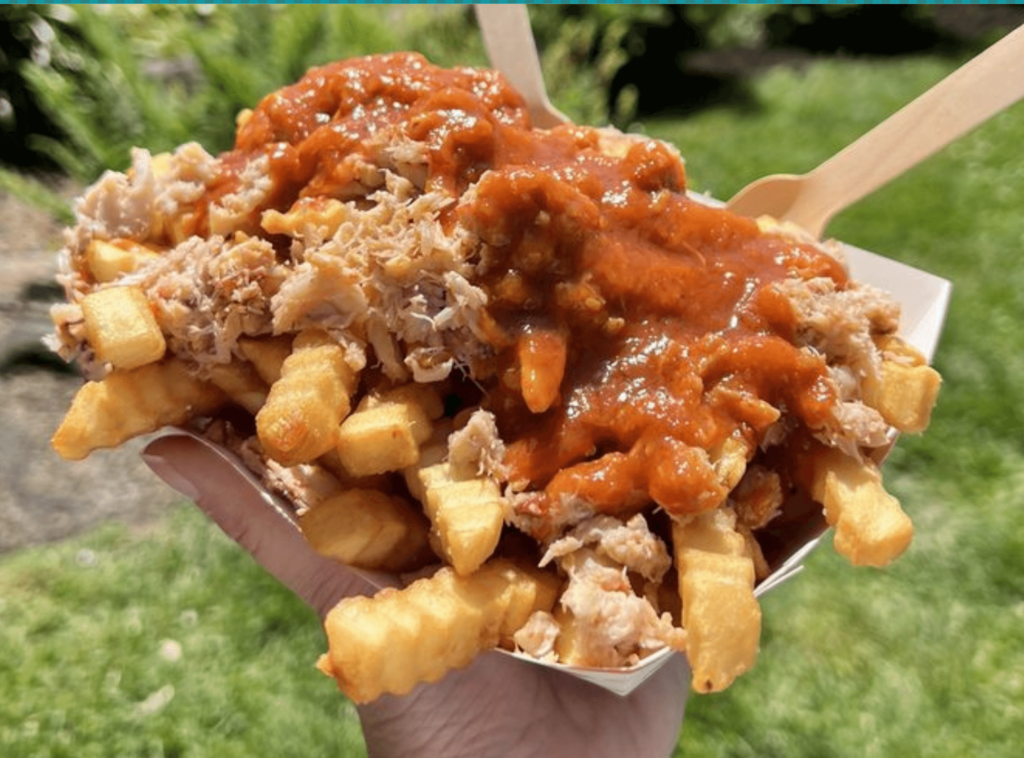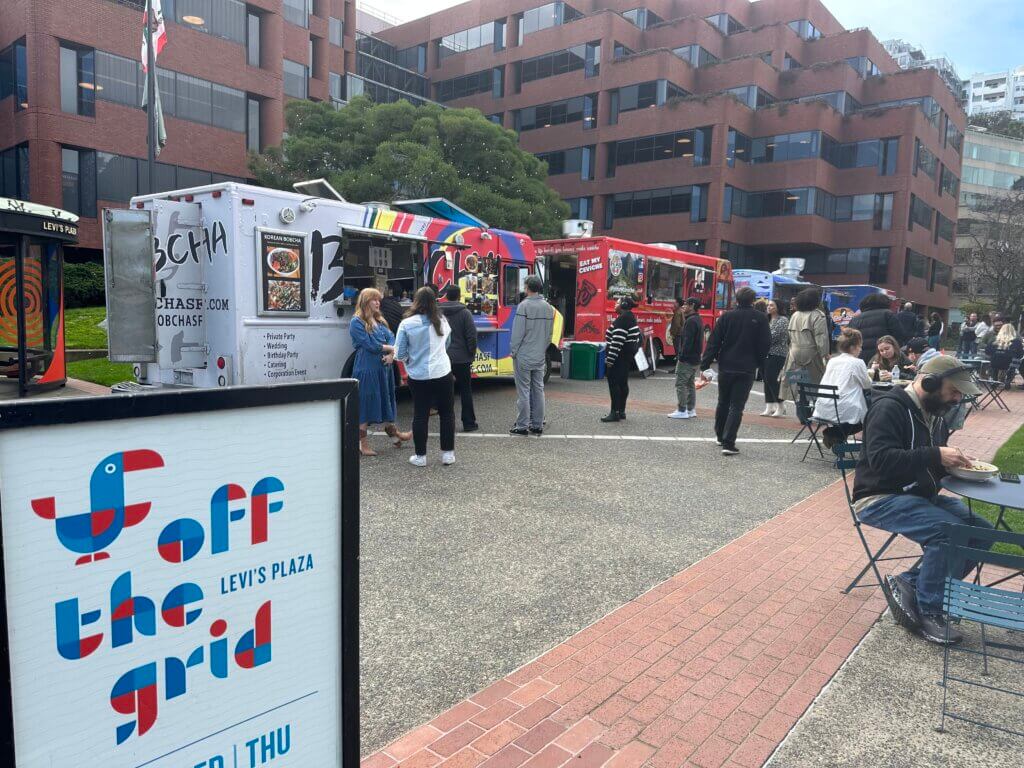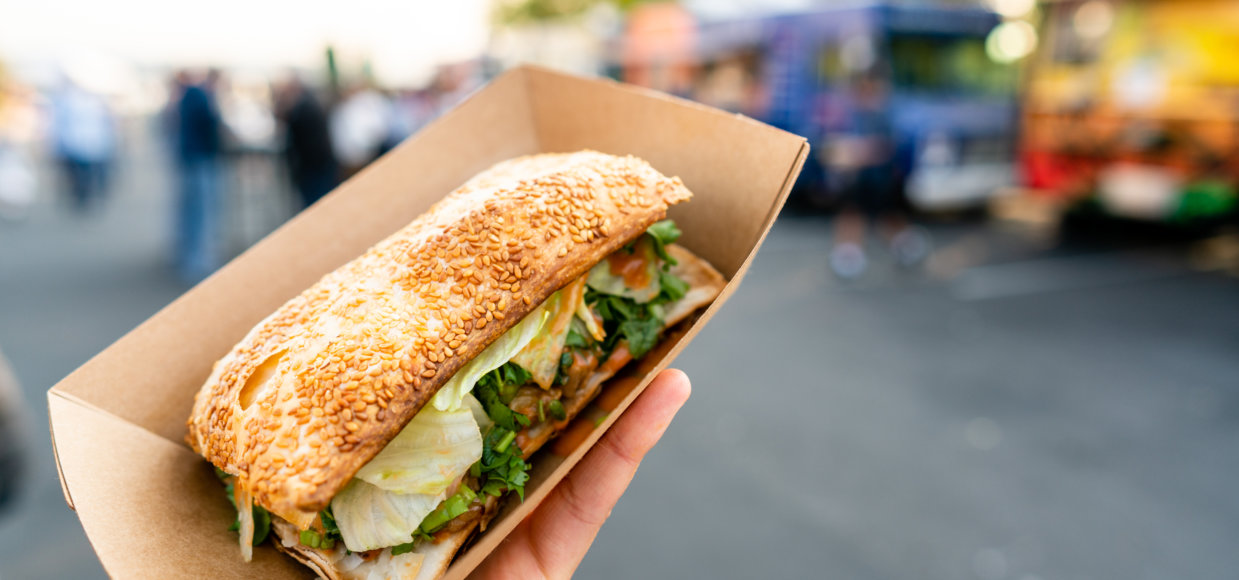
If there’s one thing entrepreneur Sharon Song has learned about the mobile food business, it’s to never count on things being constant. Locations change, preferences change and — in the case of her 2-year old mobile food venture, Twister — entire menu concepts change, too.
Originally conceived as a snack truck selling twisted potato fries geared towards festival-goers, Twister has evolved into a lunch- and dinner-time mainstay serving hearty rice bowls and modern Asian comfort food to Bay Area diners. An avid home cook and restaurant industry vet, Sharon combines traditionally prepared ingredients in novel and unexpected ways. Authentic Korean bulgogi beef is served alongside Chinese-style chow mein, while Southeast Asian roti flatbread is formed into a quesadilla of sorts with ground beef and cheese. While the concept may have pivoted from its snack-centric beginnings, the name “twister” still rings true.
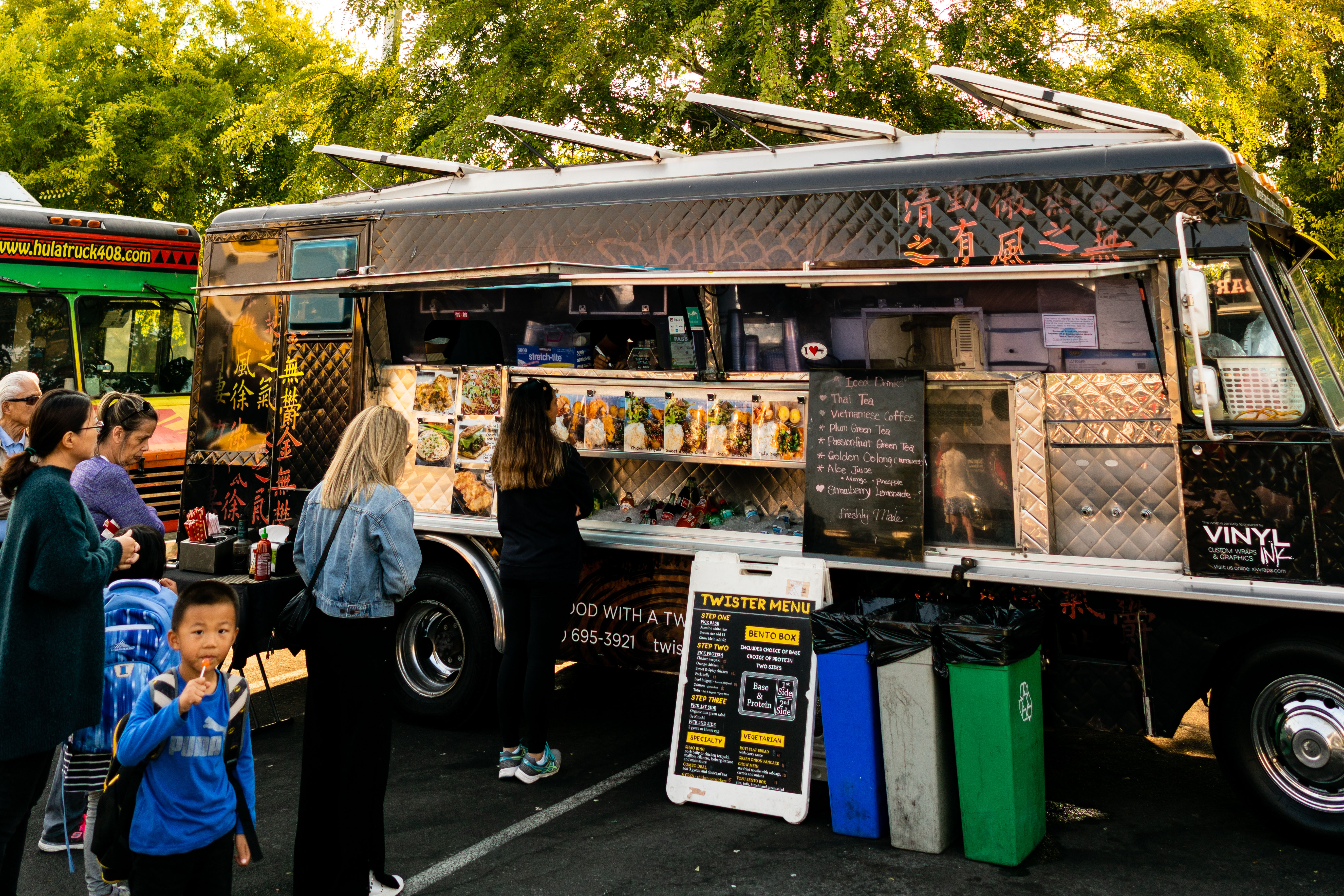
A serial entrepreneur with a wellspring of ideas for creative culinary mash-ups, Sharon has already embarked on another mobile food adventure, The Rolling Duck. Featuring the same style of pan-Asian cuisine she’s become known for, her second truck (a labor of love she operates alongside her husband) specializes in Peking duck served on everything from tacos to baos.
We sat down with Sharon to learn more about her whirlwind two years in the business, and what’s next for her burgeoning mobile food empire.
Tell us how you got started in the industry. Why mobile food?
I was in the restaurant industry for a long time and used to manage a couple of upscale restaurants in the Bay Area. Most of my experience is in the front-of-house, but I’ve always loved cooking for parties and stuff like that. I knew I wanted to do something with food, and I thought about opening a restaurant. But I had some relatives doing food trucks and it kind of inspired me. I thought, “that looks fun.” So, in September of 2016 I bought a food truck and that was it.
I really think you can make more money on a food truck if you’re smart about it. The restaurant business is tough. The overhead costs are so high and it can take a long time to be profitable — especially in the Bay Area. If one of my trucks was failing, I could sell it and still get most of my money back. But the best part is the customers. You don’t have to wait for them to come to you. You get to come to them.
How has your business evolved from when you first started?
Well, our menu has completely changed. When we first launched, we specialized in snack items and only had one rice bowl. Our first service on the truck was at Apple, and we had no idea what we were doing. Everyone wanted the rice bowl and we ran out after 20 minutes. That’s when I realized that if we were going to be a lunch truck, we needed to provide real, satisfying meals. Comfort food.
The first rice bowl we ever had was a Japanese curry chicken. We eventually changed it to a chicken teriyaki, and added different protein options like pork belly, orange chicken, beef and veggie. Every few months we’re adding something new. Earlier this year, I changed my menu again to offer customizable bento boxes. I’ve probably changed it 10 times now to make it more friendly, easier to order and to give people more choices.
What’s your personal favorite item on your menu, and how do you make it?
My favorite thing on the menu is definitely our pork belly shao bing. It’s an authentic Chinese snack that makes for a really tasty breakfast. I don’t think there are many people who serve it the way we do — especially from a truck.
It starts with a sesame flatbread that’s baked fresh in a clay oven. It has a flaky texture like a pastry. We stuff it with pork belly, green onion, cilantro and miso sauce. The way we make the pork belly is pretty special… it’s hard! We take extra steps to clean and cut the pork belly, then we caramelize it and braise it in flavorful pork broth for forty minutes. The broth itself has over ten ingredients. The extra labor is worth it because it’s so delicious.

Has coming from a career in fine dining influenced the way you run your business?
Yes. I have a higher standard for everything. I was literally trained to catch mistakes and sweat all the little details. So, all the food we serve needs to be presentable. It’s not always easy to achieve on a food truck where you’re limited in the amount of staff you can have. I want to challenge the perception of what mobile food can look like. Maybe one day, food trucks can have Michelin stars, too.
What defines your long-term success? What do you see as your biggest obstacle?
In another year or two, I’d love to not be on a truck — to have reliable stuff running the day-to-day operations of the business. In terms of expansion, our goal is to get a new truck every year. I’d love to eventually re-brand one of our concepts into a dessert truck.
Our biggest challenge is staffing. I really need more professional people. There are so many things I want to work on, but I don’t have time. I’m a picky person so finding someone I really like is not easy.
How has running a business shaped your family life — or changed the way you think about business?
We work way too much! My mom’s been helping us take care of the kids. It’s always a struggle to find balance.
But one of the major benefits of owning your own business is being able to choose your schedule. We work really hard during the summer because that’s when business is strong. In the winter time, we take a month off and go on vacation. That’s our time to be together as a family and we know we can always count on it.
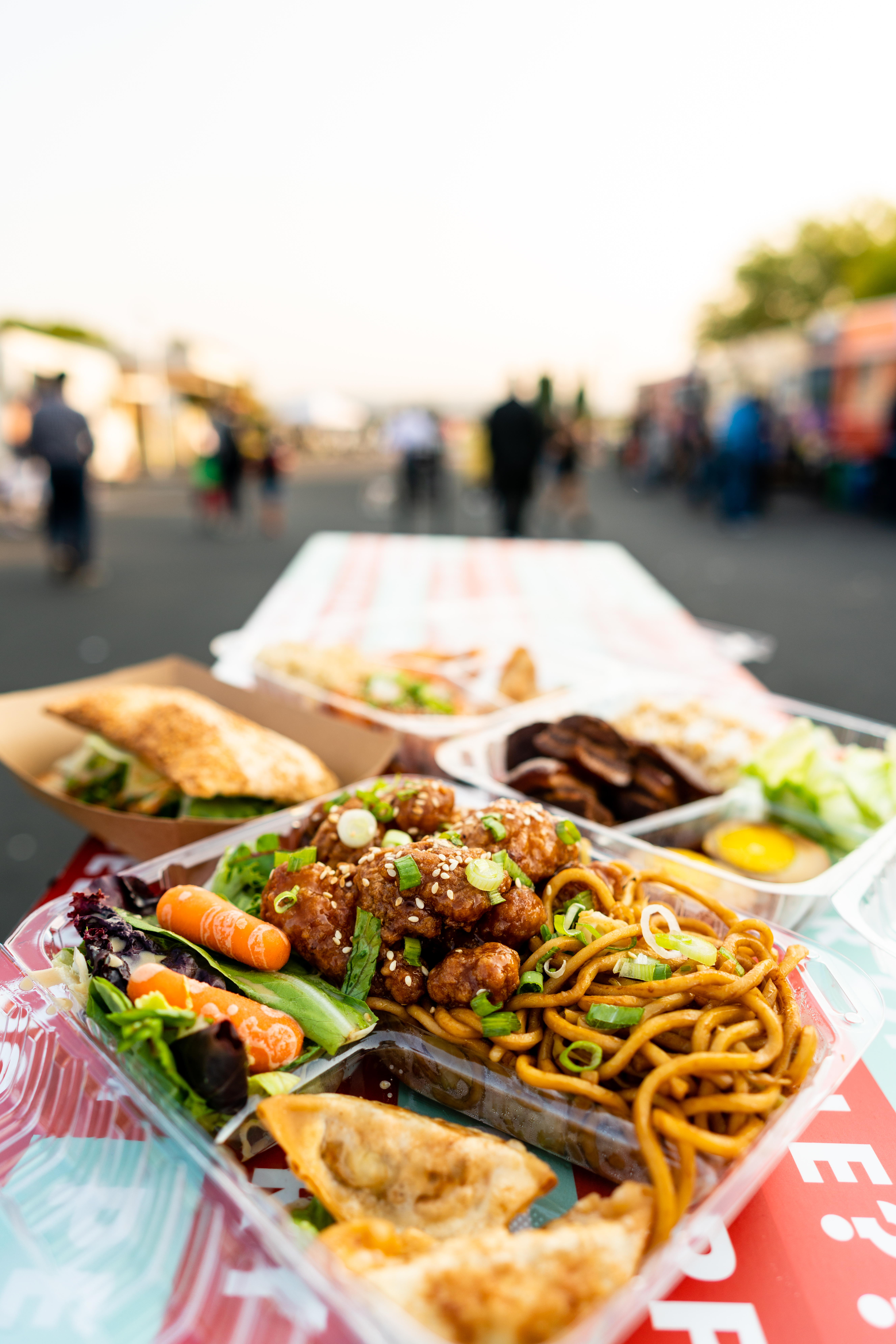
What do you wish you knew before you started your business? What advice would you share with others?
When I was new to mobile food, I didn’t even know the difference between a regular lunch service and a catering service. I used to do my whole menu rather than just a few items, which is costly and inefficient. There are so many little things you don’t even think about it. But one of the most rewarding things for me is being able to share knowledge with others who are just starting out. We’re a small community, and what goes around comes around. If I can help somebody avoid some of the same mistakes I made, that’s a good thing.
When it comes to menu development, it’s not about what you want to sell — it’s about what people want to eat. I was in the restaurant industry for so long, and people can be really stubborn. It doesn’t matter how great you think your food is. If people aren’t ordering it you’re going to be out of business.
Have you had an experience where your food played a role in building community or bringing people together?
I really care about building relationships with customers in the communities we serve. I think this comes from my background in fine dining. If they’re not happy with something I give them a refund. There are people who get in line and I already know who they are and what they want. I put in their order so that when they get to the window they just have to pay. It makes them feel like a VIP.
A great example is at Off the Grid: Menlo Park, where we do dinner on Wednesday nights. Eighty percent of the people I see here come to me every time. We actually have a following for our “quesadilla” which we make with roti flatbread, ground beef, seasoning and cheese. It doesn’t matter what the weather is like — people will be there lining up for it.
What excites you the most about the mobile food industry?
In restaurants, every day is the same. But when you own a mobile food business, every day is a different place and a different adventure. You’re meeting new people all the time. It keeps things interesting.
Find Twister’s pan-Asian street food at Off the Grid locations around the Bay Area. To bring the Twister experience to your next private event, get in touch at Off the Grid Catering.

